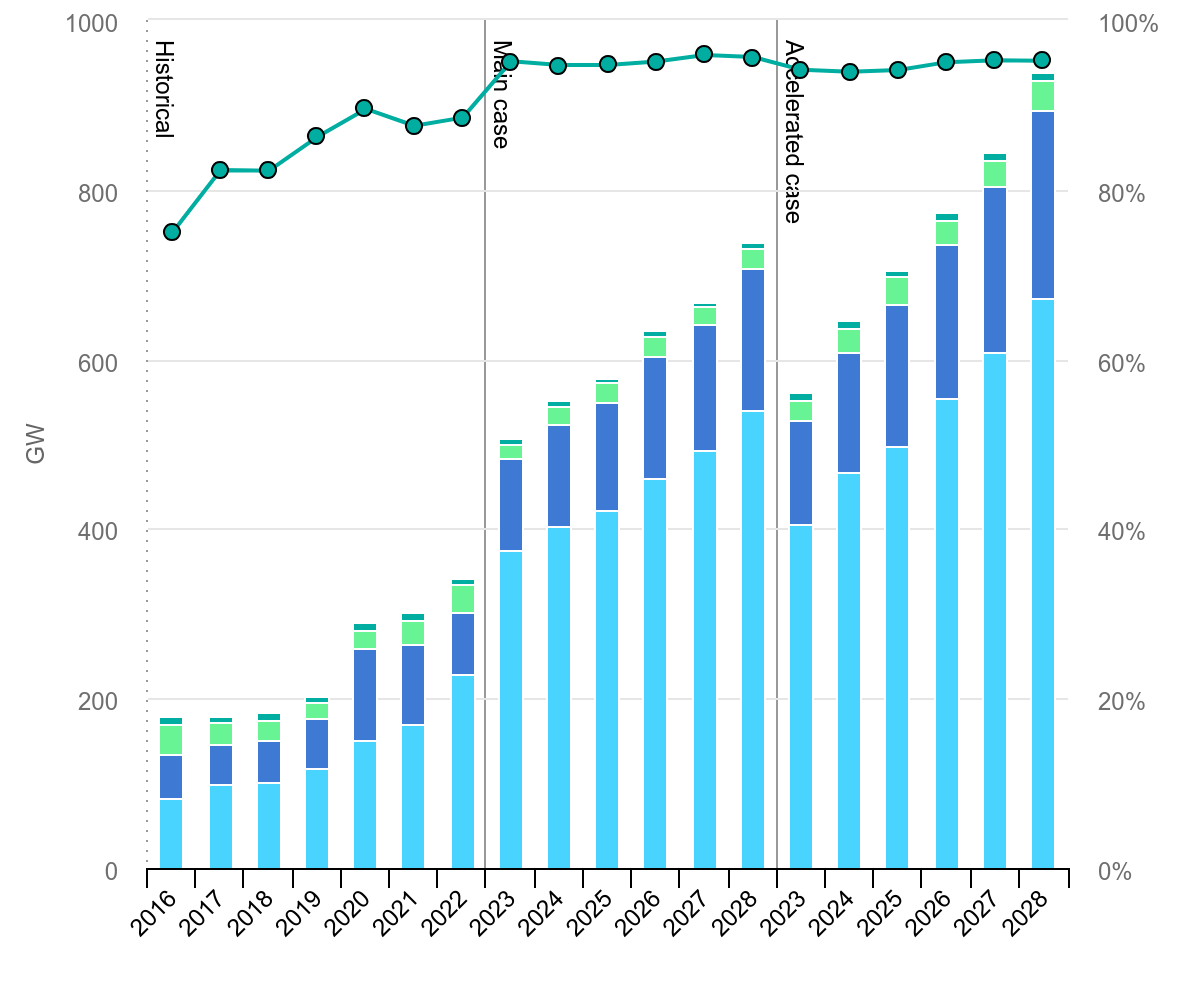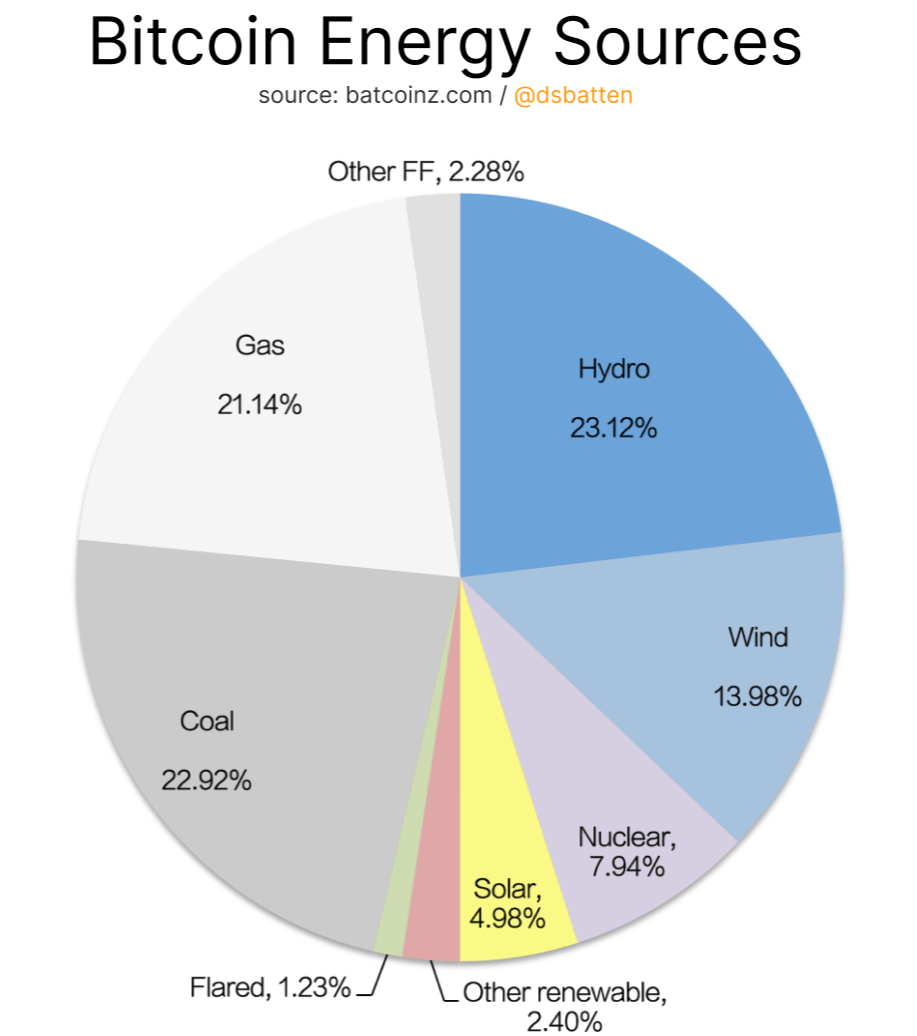Stay up to date with the latest news, announcements, and articles.

Bitcoin miners are now turning to solar energy in the wake of the clean energy initiatives, with more than 54% of their power consumption coming from renewable sources.
Solar powered bitcoin mining crypto mining offers potential tax breaks, grants, and long-term cost savings, but it also comes with reliability and environmental benefits as well as some drawbacks.
But is solar crypto mining profitable? Are there solar energy Bitcoin mining hosting companies for small miners?
Why Solar Power is Good for Bitcoin Mining
As Bitcoin mining became more mainstream, more investors were interested in a share of the attractive incentives, which saw the mining industry explode. However, for environmentalists who viewed it from a sustainability perspective, Bitcoin mining thrived at the expense of the environment, and that’s a bad thing.
Bitcoin’s massive environmental impact is primarily due to its transaction security and verification system. The proof of work algorithm requires that miners or nodes who maintain the Bitcoin network and ensure its security solve complex cryptographic puzzles to verify transactions.
Multiple nodes participate in the network, competing to crack the code first, so they must use high-power computers. The computing power required to mine a block successfully varies depending on the hash rate, which adjusts periodically in response to various factors. These computers, the mining rigs, consume massive amounts of power, and much of it is lost through heating.
When these power demands are met using nonrenewable energy sources or fossil fuels, Bitcoin mining will have a massive carbon footprint, which is unsustainable in the long run. As a renewable energy source, solar power bitcoin mining provides a viable solution ensuring Bitcoin miners can run their operations sustainably without causing environmental hazards. It is 100% green, and when harnessed properly, solar power is sufficient to power mining operations. Utilizing a solar bitcoin mining setup offers additional incentives such as tax credits, reduced electricity costs, and a lower carbon footprint, despite the challenges of intermittency and upfront installation costs.
The Solar Energy Bitcoin Mining Market

According to the International Energy Administration, solar power accounted for three-quarters of the total renewable energy generated worldwide in 2023. Along with wind energy, solar energy generation is expected to double by 2028 compared to the levels generated in 2022. The IEA attributes the growth to the increasing efforts and policies that support solar power generation in most countries. Its generation cost is also lower than fossil fuel energies and some non-fossil alternatives.
The Solar Energy Industries Association senior director, Shawn Rumery, notes that the prices of solar power in residential places have dropped by more than 50% over the last decade. Therefore, even though solar power still represents an insignificant percentage of the total Bitcoin mining energy sources, its outlook for the future is quite promising. For now, solar power accounts for about 5% of the Bitcoin mining energy sources, although this will soon increase as solar prices continue to fall.
Installing a solar bitcoin mining rig has an upfront cost, but it can be an affordable and environmentally friendly energy source for cryptocurrency mining. In areas with ample sunlight, a solar panel system can provide a practically guaranteed power source for mining rigs.

The United States, for instance, provides some of the best tax credits for solar power. Any solar installation done between 2017 and 2034 is eligible for a tax credit of up to 40% of the total installation cost in a state like Idaho and 25% in New York and South Carolina. With such tax incentives, solar energy positions as a viable energy source for sustainable and profitable Bitcoin mining.
How Much Solar Power Do You Need to Mine Bitcoin?
The amount of solar power for mining is variable. It depends on factors like the number of mining rigs running, their efficiency, and the geographical location. They can harness and use the power in real-time if the location has more direct sunlight. However, such a location would mean the temperatures are high, and more power will be required for cooling.
According to industry estimates, a single mining rig can consume between 1400 watts and 1800 watts. So, assuming you have a setup where each miner consumes 1500 watts, you need to consider how many solar panels are required. Running your miner would take about 10 solar panels with a power capacity of at least 300 watts each. Therefore, a small Bitcoin miner with 10 mining rigs would require 100 solar panels with a 300-watt capacity to run these rigs.
However, miners in locations with more sunshine may require fewer solar panels to run their operations, as they can harness sufficient power even with fewer panels. In any case, the more mining rigs you have, the bigger your power demand will become.
What Are the Pros and Cons of Solar Energy Bitcoin Mining?
Besides maintaining emission-free operations, installing solar panels for Bitcoin mining provides several benefits, including reduced energy costs, potential tax breaks, and grants, as well as some downsides.
The Pros
Low-cost Power
Solar energy provides low-cost power, which Bitcoin miners need to ensure profitable mining operations. Energy prices have been inconsistent, skyrocketing in some years, and falling over the last few years. These inconsistencies have significantly hurt mining operations, particularly in the 2022-2023 crypto winter characterized by skyrocketing energy prices and a declining crypto market. Further, countries like the United States and Canada have hostile energy prices, yet they are the hotbeds of crypto mining.

With solar powered bitcoin mining, miners have a low-cost alternative that provides stable power for continuous mining operations. Although the initial cost of installing solar panels may be high, governments like the US are providing tax credits that will lower equipment and labor costs. Also, solar power does not require maintenance, so it’s still cheaper in the long term.
Miners Can Vertically Integrate with their Power Demands
A unique aspect of solar energy is that it can be stored. Miners who invest in good batteries can store energy to use in times of demand. Therefore, besides running miners in real time, solar energy provides a backup option to serve during downtimes, such as in bad weather. Additionally, miners can assess their power demands and invest in solar panels and batteries that can power their fleet of miners and cooling infrastructure. That way, companies involved in solar bitcoin mining setup can get the maximum possible uptime without any downtimes from power interruption.
Environmentally Friendly Bitcoin Mining
The environmental implications of Bitcoin mining on the environment have been a critical concern, resulting in a total crypto ban in China. Consequently, miners are now striving to achieve emission-free Bitcoin mining, and solar power bitcoin mining provides a means to achieve green Bitcoin mining. It is a renewable power source, so miners who can turn to 100% solar powered bitcoin mining would not have any negative environmental implications.
Profitable Bitcoin Mining
Energy efficiency is now one of the most critical concerns for Bitcoin miners. With Bitcoin still an energy-intensive activity and the grid power costs still high, miners only have to look for cheaper alternatives like solar power. Once you’ve invested in solar panels and batteries, you will be mining Bitcoin with zero power cost. Miners can profit more from their crypto mining operations by cutting power costs through renewable alternatives like solar bitcoin mining.
The Cons
The Intermittent Nature of the Sun
The sun is naturally intermittent, meaning it does not always shine high and bright. Therefore, there are times when the solar bitcoin mining setup will not generate electricity. If miners have not invested in enough batteries to power their miners long enough for the shiny bright sun to resume, they may be forced to shut down their rigs for some time.
High Initial Cost
Although mining with solar power is cheaper in the long term, the initial cost of installing solar panels and acquiring enough batteries to store a considerable amount of power is high. Consequently, only miners who have the resources and are ready to incur the initial cost will benefit from solar powered bitcoin mining.
Limited Space for Solar Panels
Bitcoin mining is a highly energy-intensive process. Therefore, harnessing enough solar power to run a crypto mining setup means deploying many panels. Miners thus face the limitation of having enough open space to install solar bitcoin mining rigs.
Geographical Limitations
Geographical limitations exist in different perspectives. First, some locations’ climates prevent miners from mining with solar power. For instance, if a region is cloudy for the better part of the year, it may not be enough sunny days for mining crypto with solar power. Additionally, government policies in some regions may hinder the growth of solar power or set policies that limit the ability to generate enough power for crypto mining purposes.
Where Can You Host Your Miners for Solar Energy Bitcoin Mining?
Finding the best power rates from your hosting provider for small-scale miners is paramount. A hosting service is your best solution for efficient mining, and only a few compare to a hosting company focused on Bitcoin mining with solar power.
EZ Blockchain
EZ Blockchain is an innovative mining hosting company that seeks to bridge the gap between the energy sector and Bitcoin mining. The company acknowledges the importance of clean and renewable energy and is thus invested in providing hosting services using clean energy. Upwards of 65% of EZ Blockchain’s power comes from renewable sources, including solar power.
With EZ Blockchain, small-scale miners can start mining using solar power from as low as $0.065 per KWH all-in.

Bitfarms
Bitfarms is a global Bitcoin mining company operating in Canada, the USA, Paraguay, and Argentina. The company has a total of 11 Bitcoin mining farms in operation, with a total capacity of 240 MW and 6.5 EH/s of mining capacity. This solar powered Bitcoin miner maintains a unique commitment to sustainable crypto mining by using clean energy to run its operations and reduce its carbon footprint.
Aspen Creek Digital Corporation
Aspen Creek Digital Corporation is a renewable energy Bitcoin mining company focused on decarbonizing power generation by developing the world’s largest clean energy-powered data centers. The company runs a series of renewable energy Bitcoin mining operations in multiple locations, including Texas and West Colorado.
ASDC’s Texas solar crypto mining operations include a 30 MW data center connected to an 87 MW solar farm. The company also launched a 150 MW project in 2023 that is connected behind the meter to a 200 MW solar farm.
Summing Up
Although Bitcoin mining has been labeled an environmental hazard, it presents a great opportunity to accelerate the world’s environmental sustainability goals. Investors are now more focused than ever on going green in their efforts to mine more efficiently and profitably, and their efforts align with ESG.
Bitcoin miners like EZ Blockchain have also devised innovative ways of tapping into wasted and underutilized energy to power Bitcoin mining. With the development of the infrastructure, more green energy can be harnessed and used in other sectors besides mining. Eventually, the gap between the energy sector and Bitcoin mining will be bridged through solutions like solar bitcoin mining.
Fill out a form and our bitcoin mining expert will contact you.
FREE CONSULTATIONchoose
a miner
profit and
understand data?
business remotely
with EZ Blockchain?
Fill out a form and our bitcoin mining expert will contact you.










